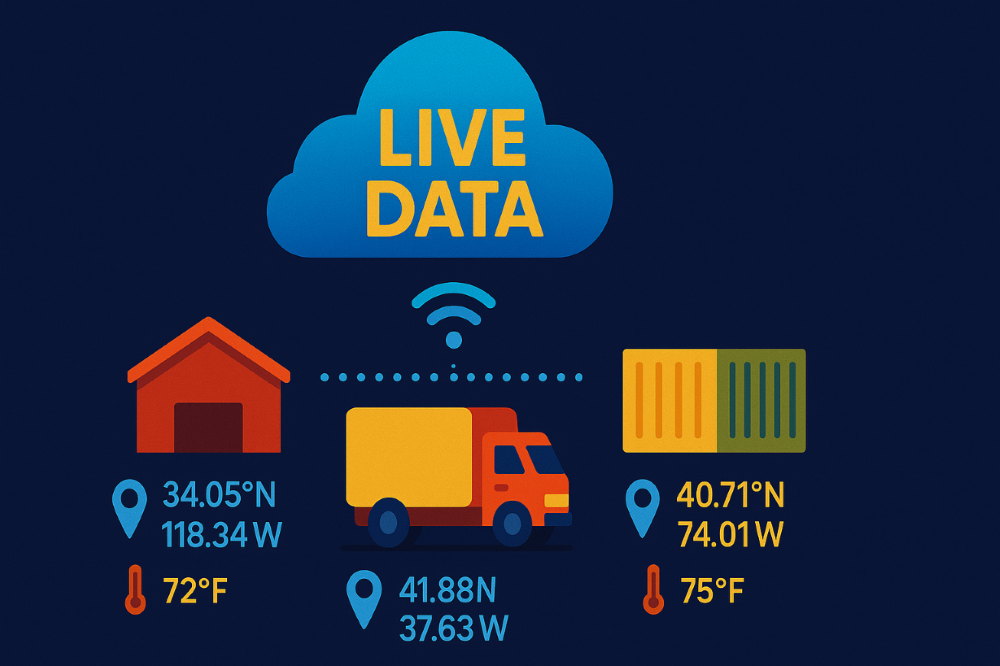
- May 2 2025
- Don Friddell
The Rise of IoT in Logistics: Real-Time Visibility and Data-Driven Decisions
In the fast-moving world of supply chain management, visibility and speed are everything. That’s why the Internet of Things (IoT) is quickly becoming a cornerstone of modern logistics. With real-time tracking, automated alerts, and actionable insights, IoT in logistics is driving transformative changes across the supply chain.
What Is IoT in Logistics?
IoT refers to a network of connected devices that collect and exchange data. In logistics, this means everything from GPS-enabled trucks and RFID-tagged pallets to smart sensors in warehouses that monitor temperature, humidity, and equipment health. These interconnected devices work together to create an ecosystem of real-time visibility and predictive insights.
Real-Time Visibility: A Competitive Advantage
One of the biggest benefits of IoT logistics is real-time visibility. With IoT-enabled tracking, businesses can monitor shipments, inventory levels, and delivery routes in real time. This reduces uncertainty and allows for quick, informed decisions when issues arise—such as rerouting deliveries to avoid weather disruptions or notifying customers of shipment delays.
Key benefits of real-time visibility include:
- • Accurate ETAs and proactive customer communication
- • Immediate alerts for delays or disruptions
- • Better inventory management and reduced stockouts
Data-Driven Decisions for Smarter Operations
IoT doesn’t just collect data—it provides a foundation for smarter, faster decisions. By analyzing supply chain data generated by IoT devices, logistics managers can uncover patterns, predict issues, and optimize operations.
For example:
- • Predictive maintenance: IoT sensors can detect equipment wear and tear before failure occurs, reducing downtime.
- • Demand forecasting: Real-time inventory and shipment data feed into analytics models for more accurate forecasts.
- • Route optimization: GPS and traffic data help identify the most efficient delivery routes, cutting costs and fuel usage.
The IoT Supply Chain Ecosystem
The modern IoT supply chain is a dynamic web of connected stakeholders, from manufacturers and warehouses to carriers and retailers. Each link in the chain shares data that enhances visibility and coordination across the network.
Companies that invest in IoT-enabled systems can benefit from:
- • Seamless integration with transportation management systems (TMS) and warehouse management systems (WMS)
- • Increased automation and reduced manual data entry
- • End-to-end visibility from supplier to customer
Challenges and Considerations
Despite its benefits, IoT implementation comes with challenges. Data security, device interoperability, and upfront investment can be barriers. However, as technology becomes more standardized and cost-effective, adoption is accelerating—especially among logistics providers looking to differentiate themselves in a crowded market.
Final Thoughts
IoT in logistics is no longer just a trend—it’s a strategic necessity. From real-time visibility to intelligent decision-making, IoT is reshaping how supply chains operate. As businesses look to remain competitive in an increasingly digital economy, embracing IoT in the supply chain will be key to unlocking greater efficiency, reliability, and customer satisfaction.


Leave Your Comment